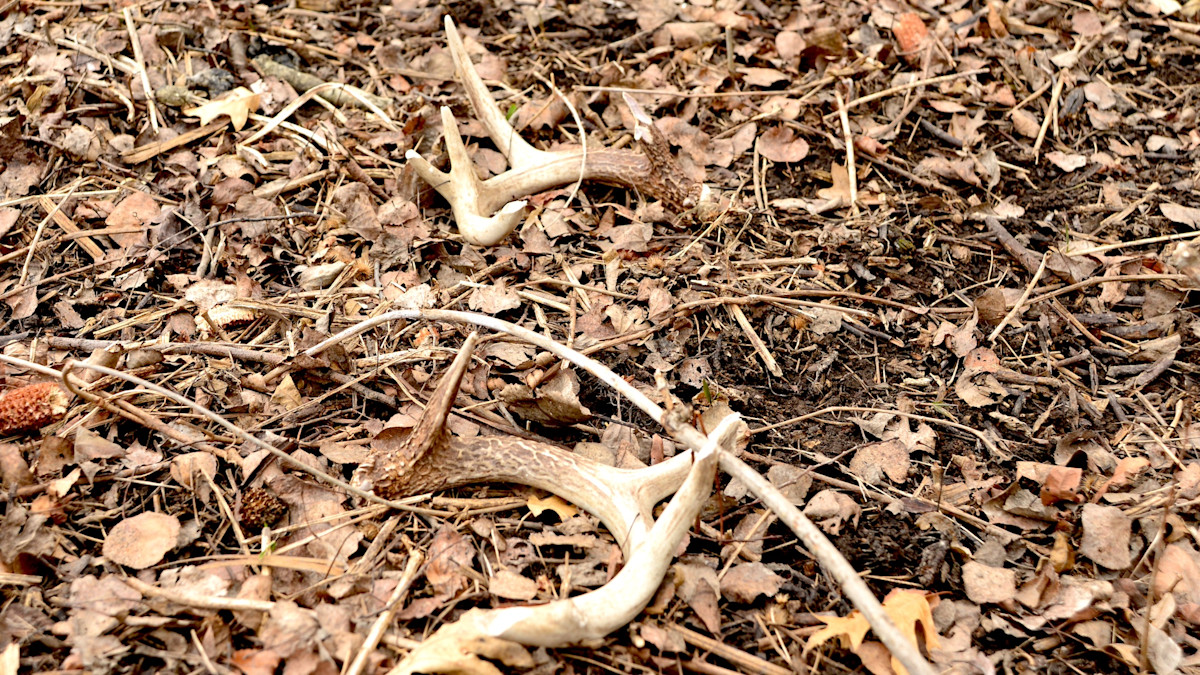
I have a poor memory for a lot of reasons, but one recollection I have that is almost as crisp as the day it happened involves a pair of forky antlers lying in a buck bed. I’d been fighting the late-March ticks in north-central Minnesota for hours when I walked halfway up a grassy hillside and found my first matched set.
Even though they might break 20 inches if I measured them, which I won’t, it was a special moment. It had taken me years of shed hunting to find a matched set, which is something that doesn’t seem like it would be too difficult. It can be, and just like with all things deer hunting related, the quality of your spots will determine the actual difficulty level.
Since I was shed hunting public land in the Twin Cities, the quality of my spots was pretty low. In fact, on a good year, I might pick up four to six antlers. The odds of two of them coming from the same buck are extremely low. A matched forky set might not mean a thing to most people, but to me, it was damn cool. And I wanted more.
The Easiest Matched Sets
That forky was courteous enough to drop both of his antlers in the same bed, which made finding one as easy as finding two. Some bucks do this, but it seems rare. In a lifetime of shed hunting, I’ve only matched up a couple of sets that were right next to one another. Most of the time, it takes a lot of effort in a small area to try to go from a half-rack to a full one.
The thing is, you shouldn’t assume that it won’t be easy. If you are lucky enough to find a side, try to convince yourself the other half is close. When I match one up, it’s almost always within a couple acres, but even that can require a lot of searching.
A few years ago, a buddy and I were shed hunting when he scooped up a four-point side from a really solid buck. The antler was laying in a staging area just off of a cut cornfield, so we decided to grid search for the match. We had almost given up when I walked a trail in the opposite direction I’d already traveled. It was almost like it was meant to be because the other half of that eight-pointer’s rack was poking out of the snow in the shade of a tree, not 75 yards from where my buddy had picked up his other side.
The Long Holders
The time between one side dropping and then the other is probably the biggest factor in matching up sheds (other than maybe just overall shed hunting pressure). If a buck loses one side but carries the other for three weeks, the odds are pretty good they won’t be all that close together.
This happens a lot, which you can see if you run cameras in the winter. In this case, especially if you want to match up a specific buck, it’s a matter of putting on the miles. This is honestly the best (although also probably the most disappointing) advice—the more you walk, the more you find. There are almost no tactical or strategic secrets to shed hunting, and covering ground is a core tenet of people who not only find a lot of sheds but also match them up frequently.
This is also one of the things I love about shed hunting, even on public land. It’s possible that every fresh day could bring new antlers to find. That’s encouraging when you’re looking at boot tracks in the snow. Remember that when you find an antler, the match could be lying nearby, or it could be riding around on a buck’s forehead for weeks.
Network Matches
This is the longest shot of the bunch, but getting to know your neighbors and other shed hunters in your area can help you match up a set. While talking those people into giving up a side so you can be happy or persuading yourself to do the same for someone else can be a real long shot, it is possible.
It’s also just interesting to know. Even if your shed-hunting peers aren’t willing to make a trade, the knowledge of when and where they found half the set, combined with your info, can tell you a lot about an individual buck and deer in general. It can also prove to be a motivator so you get out there more and keep looking.
This is a good thing because it’s the surest way you’ll find a matched set at some point this winter.
For more wintertime deer advice, check out these articles: When Should You Start Shed Hunting, The Best Sign To Find While Winter Scouting, and 3 Ways To Improve Your Winter Scouting.




